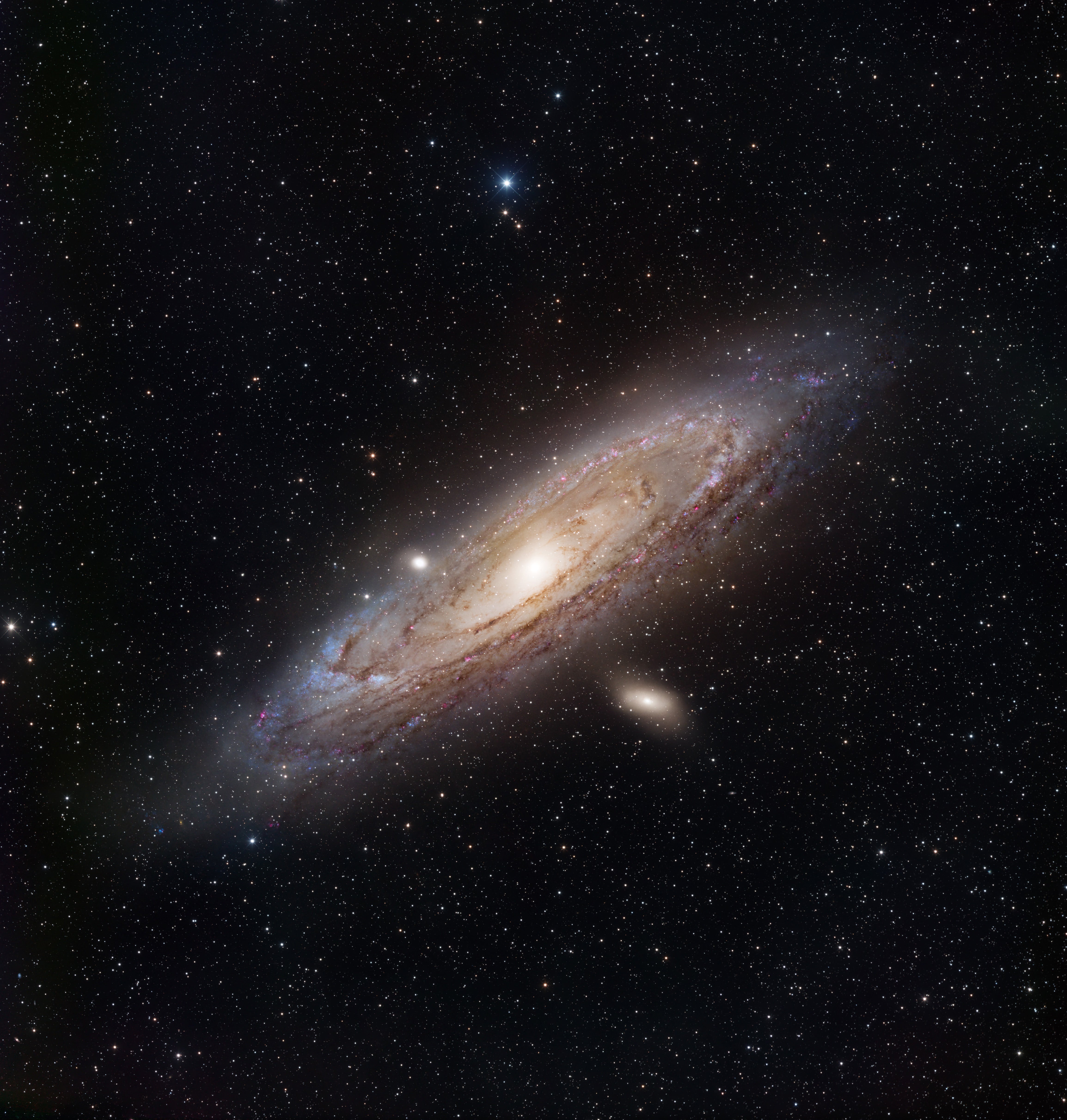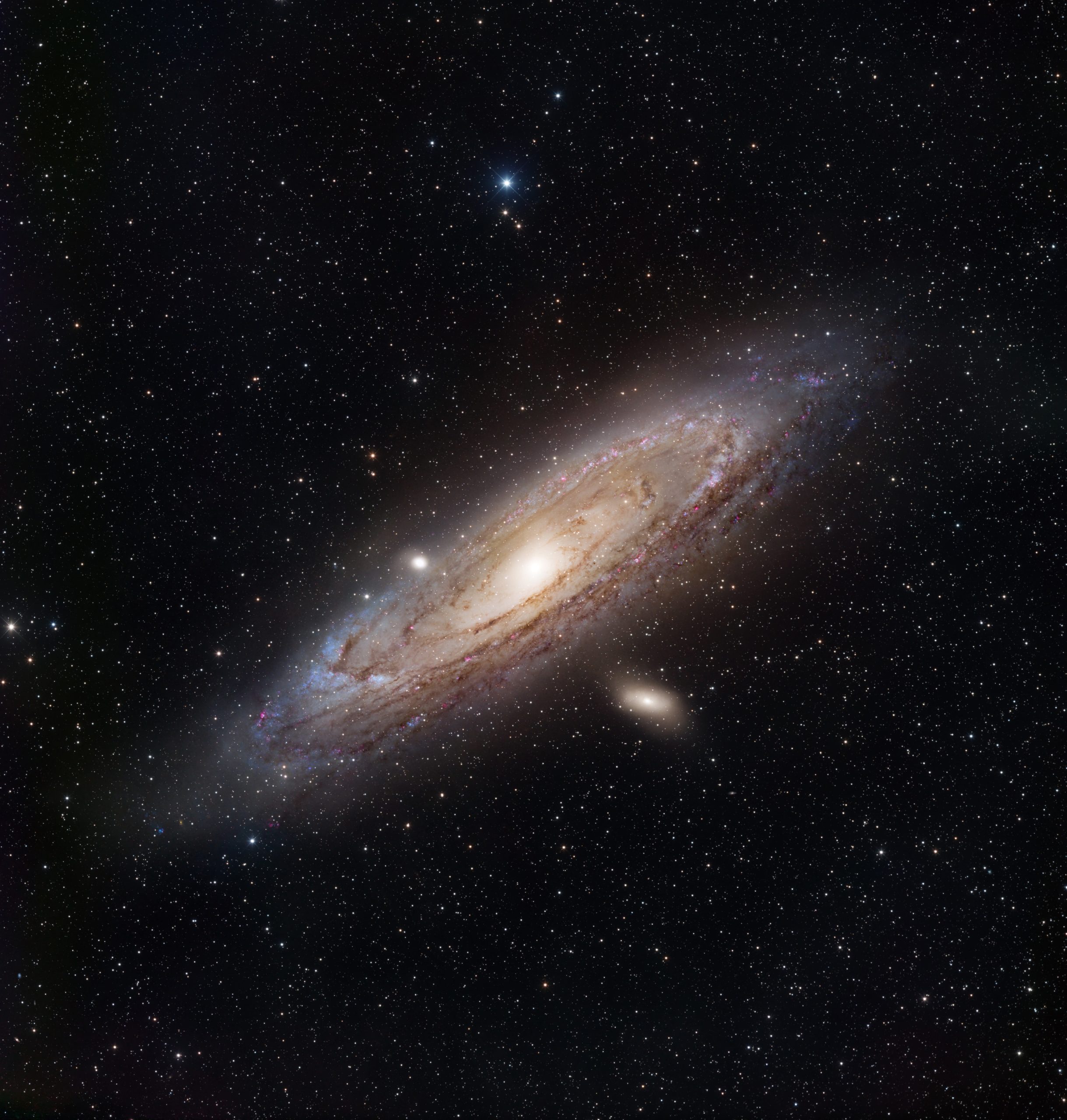A Recently Discovered Gas Cloud Near Andromeda Stumps Astronomers – Scientific American
With dozens of large telescopes scattered across Earth and some well above it, you might think we’ve pretty much discovered all there is to find in the sky. But this is, literally, too narrow a view.
The recent discovery of a huge cloud of gas floating near the Andromeda galaxy—one of the most extensively studied objects in the heavens—is the latest proof that the sky still offers a vast amount of celestial real estate to sift through. This cloud has been hiding in plain sight for decades. And the best part is that its origin is a mystery.
The advent of inexpensive but very high-quality digital detectors has made astronomical photography easier than ever before. This has sparked a new trend among astronomy enthusiasts to focus on one select area of the sky and take what are effectively very long exposures in the hopes of finding whatever faint fuzzies might lie there.
Amateur astronomers and researchers Marcel Drechsler and Xavier Strottner decided to take advantage of these recent technological improvements. They wanted to scan parts of the sky looking for faint nebulae—gas clouds—so they brought in Yann Sainty, a French amateur astronomer and astrophotographer. Sainty decided to target Andromeda, a large spiral galaxy much like our own Milky Way that’s just 2.5 million light-years away. Its proximity, cosmically speaking, has made Andromeda a juicy target for astronomers for more than a century. With its most obvious riches mapped, astronomers had generally assumed anything left to discover there would be small, individual objects such as nebulae inside the galaxy itself.
Sainty sent his observations to Drechsler and Strottner for processing and analysis. And while poring over the images, they found something that defied expectations: a huge extended structure appearing almost as big as Andromeda itself and right next to it. The nebula only materialized when Sainty obtained images with a filter that blocks all light except for the blue-green glow emitted by doubly ionized oxygen—that is, oxygen atoms that have lost two of their outer electrons, a common occurrence in giant gas clouds. It was essentially human curiosity that drove the use of this filter; no very deep large-scale maps of the sky around Andromeda had ever been made before.
During this same observing run, Sainty also took deep images using another filter tuned to the light from hydrogen atoms. And while he saw plenty of such gas clouds surrounding Andromeda (most likely nebulae in our own Milky Way superposed in the sky near Andromeda), none matched the size and shape of the peculiar oxygen-rich nebula.
The team wondered, however, if the cloud might be some sort of artifact in Sainty’s images—reflected light in his telescope, for example. To find out, the researchers asked another accomplished amateur astronomer, Bray Falls, to make more observations with his own telescope. He saw the same nebula in his data, independently confirming the cloud’s existence.
In the end, observations from five telescopes in France, California and New Mexico convinced the team that this object was real. It’s now dubbed Strottner-Drechsler-Sainty Object 1, or SDSO-1.
But the question still remains: What is it?
To find out, the team reached out to professional astronomers Robert Fesen, Michael Shull and Stefan Kimeswenger for a deeper analysis. Published in the American Astronomical Society’s (AAA’s) journal Research Notes of the AAAS, the results of this professional-amateur collaboration are fascinating, even as clues to the nebula’s origins remain maddeningly vague.

Astronomers have looked at many possibilities, but at this point, the gas cloud resists explanation. Its proximity to Andromeda in the sky would strongly suggest some relation to the galaxy, and the cloud is gently curved, as if bulging away from the galaxy. Neither of these properties conclusively ties the cloud physically to the galaxy, but both are certainly provocative. If SDSO-1 is truly part of Andromeda but outside of the galaxy’s main body, that would mean the cloud is tens of thousands of light-years long, making it one of the Andromeda’s largest coherent structures.
If it resides in Andromeda’s enormous halo—a roughly spherical collection of stars surrounding the galaxy—it could be gas flung off by streams of stars there. But if so, there should be copious hydrogen seen as well because that’s the major component of stars. Yet, as Sainty showed with his hydrogen-detecting filter, the cloud has none—or at least too little to detect.
Andromeda is moving toward our Milky Way, with SDSO-1 lying roughly between them, offering another potential clue. Andromeda is so close to the Milky Way that their individual haloes may be interacting, bumping into each other as the two galaxies pass in space. Diffuse gas in the two galactic haloes would compress on collision, forming a curved structure like the bow wave from a ship moving through water. If that were the case, however, the cloud should not appear so close to Andromeda. Instead it would appear in the sky roughly halfway between Andromeda and the center of the Milky Way. And this scenario still wouldn’t explain the lack of hydrogen.
Another possibility is that the cloud is physically far smaller but much closer to us, meaning it’s a nebula in the Milky Way that is only coincidentally appearing near Andromeda. Planetary nebulae are shells of gas cast off by dying sunlike stars, and they are usually rich in hydrogen and oxygen. With the central star energizing the gas, these nebulae tend to appear bright in light emitted by both elements. So again, the lack of hydrogen in SDSO-1 is baffling.
It’s possible SDSO-1 could be the remnant of a Milky Way star that exploded as a supernova, but then it should also be glowing in ultraviolet light and radio waves. Searching older observations of Andromeda, however, astronomers see nothing coming from the cloud at any other wavelengths, including x-rays and visible and infrared light.
So at the moment, no known mechanism fits all the data. While baffling, this is also the sort of thing scientists love. Solving puzzles is why we wanted to be scientists in the first place.
The fact that something so enormous in our sky has escaped detection until now is amazing, if not entirely surprising to astronomers. Big telescopes tend to have a narrow field of view, so observing objects that have a large apparent size is difficult—especially one as sprawling as SDSO-1, which is as wide as three full moons in the sky. Bigger instruments simply missed it, unable to see the forest for the trees.
Also, the cloud is extremely faint, requiring very long exposures to spot at all. The total observation time in the discovery and confirmation images that used just the doubly ionized oxygen filter was a staggering 160 hours. Even the filters and detectors used in professional observatories are designed to observe in a different way than amateur telescopes. This also amplifies the difficulty of finding objects like SDSO-1. Even the 3.8-meter Canada-France-Hawaii Telescope, which is equipped with an incredible 378-megapixel camera and an oxygen filter, looked right at the spot in the sky where SDSO-1 sits and saw nothing. It’s an impressive piece of equipment, but it just wasn’t designed to see something so big and faint in the sky.
Solving this mystery will require spectra—breaking the cloud’s light up into small wavelength divisions similar to how raindrops break up sunlight into a rainbow. By carefully examining the spectrum of SDSO-1, the velocity of its gas can be determined via the Doppler effect—the slight blueshift of its color if the gas is moving toward us or the redshift if it’s moving away. If the cloud is moving at a similar speed as Andromeda, then it’s likely to be a part of that galaxy. If instead it’s moving more slowly, then it’s likely to be inside our own. The study’s authors report that such spectral observations are already underway, but until those are finished, the origin and behavior of this cloud will remain an enigma.
While SDSO-1 presents a conundrum, it’s also something of a beacon of hope: it’s showing us there are still many treasures in the sky left to find. We just need to use the right tools to uncover them.
This is an opinion and analysis article, and the views expressed by the author or authors are not necessarily those of Scientific American.
Editor’s Note (1/12/23): This article was edited after posting to correct the descriptions of Marcel Drechsler’s, Xavier Strottner’s and Yann Sainty’s respective roles in the discovery.






